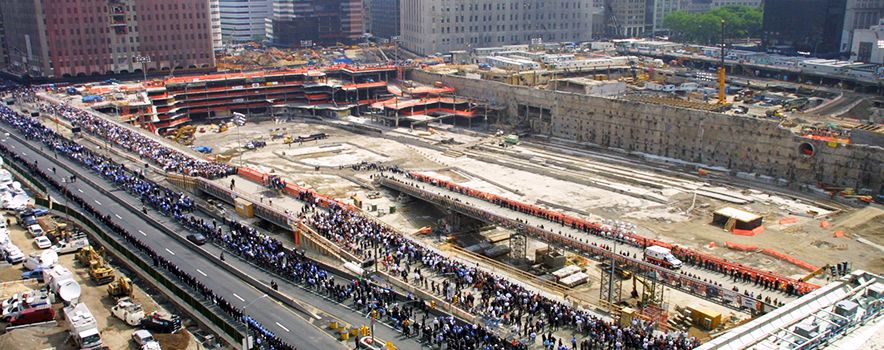World Trade Center Recovery & Clean Up
Following the attacks on the World Trade Center on September 11th, 2001 Tully Construction was one of four contractors chosen to perform the clean up after the collapse of the towers of the World Trade Center.
Tully’s workforce responded quickly to the call for help using equipment which they had on site from other jobs in Manhattan. The Tully team helped to move the massive steel structures and huge amount of debris and concrete which hampered the search and rescue operations. Although the original concern was for rescuing survivors, it soon became apparent there were few to rescue. Tully assisted the first responders – with the dignified recovery of remains. The magnitude of this recovery was of astronomic proportions and unprecedented in our nation’s history.
Tully crews worked 24-hours a day, seven days a week, moving tremendous quantities of debris, transporting the debris to the Fresh Kills Landfill in Staten Island which was re-opened for the recovery operation. Tully trucked some 500 loads of debris per day. At the height of the recovery operation, Tully had up to 300 workers at the site repairing and replacing utility pipes and ducts for Con Edison and Verizon and another 250 workers working on the “pile.” More than 120 backhoes, payloaders and truck were operated each day for more than 8 months.
The World Trade sit in what was known as the “bathtub” which consisted of a slurry wall that surrounded the complex – 80 feet deep and 3,500 feet in total length and which served as a barrier/restraining wall to hold back the water of the Hudson River and consisted of more than 900 tie-backs. The collapse of the towers damaged the “bathtub” wand was in eminent danger of failing. If the wall failed, the resulting flooding would be catastrophic to the entire area and the New York City subway systems. The original slurry wall was constructed back in the 1960’s by a joint venture known as the West Street Associates, which was a joint venture that included Tully’s predecessor company – Tully & DiNapoli.
It was determined by Tully engineers that the debris from the towers were in fact supporting the slurry wall and could not be removed until the wall was repaired. Tully’s engineers coordinated all facets of the tieback operation and trucked in more than 100,000 cubic yards of stabilizing material and a dewatering system to relieve the pressure on the wall.
The efforts by all the contractors on the site were monumental, but Tully’s workforce move more material with less equipment and personnel that the other 3 contractors combined.
By September 11th, 2002 – the first anniversary of the attacks on America and the World Trade Center, the site was ready for the solemn remembrance and families of those that perished on that fateful day.






